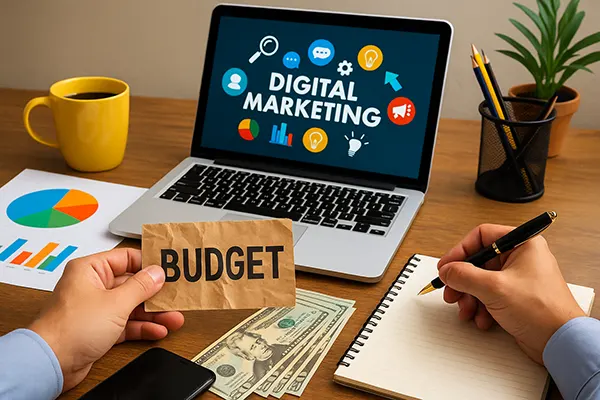
Digital Marketing on a Budget: Strategies During Inflation and Tight Financial Conditions
In times of economic uncertainty, marketing budgets are often the first to be cut. However, digital marketing remains an essential tool for maintaining visibility, engaging customers, and driving sales — even when resources are limited. This article explores how brands can continue to grow their online presence and generate results without overspending, using up-to-date strategies for 2025.
Maximising Impact with Limited Budgets
When budgets shrink, prioritisation becomes essential. Instead of spreading resources thinly across multiple channels, brands should identify those that deliver the highest return on investment. Email marketing, for instance, remains one of the most cost-effective digital tools, especially when campaigns are personalised and automated intelligently.
Social media channels with organic reach potential — such as TikTok, LinkedIn, and X (formerly Twitter) — offer strong engagement opportunities without the need for heavy paid promotion. Brands that focus on authenticity and value-based content tend to see better interaction with minimal spend.
It’s also vital to reuse and repurpose existing content. Blog posts can be turned into videos, infographics, or carousels, allowing marketers to extract more value from what they’ve already created while keeping their output consistent.
Choosing the Right Channels
Each channel offers unique benefits depending on the brand’s audience and goals. Google Search Ads may be expensive during inflationary periods, but local SEO and Google Business Profile optimisation are free alternatives that can drive consistent traffic for service-based businesses.
For B2B marketers, webinars and live streams have proven to be high-performing yet budget-friendly strategies. These formats allow real-time engagement and can later be reused for email nurturing and SEO-rich landing pages.
Investing in customer communities — such as branded groups on Facebook or Discord — is another low-cost tactic that encourages peer-to-peer interaction and brand loyalty without the need for continuous advertising.
Leveraging Automation and AI for Efficiency
Artificial Intelligence has become more accessible in 2025, offering small businesses and startups a chance to automate without massive investment. Tools like ChatGPT, Jasper, and Grammarly Business can streamline content creation while maintaining brand voice and editorial standards.
Marketing automation platforms, including MailerLite, Brevo, and ConvertKit, enable automated workflows for emails, user onboarding, and abandoned cart recovery — all crucial in maintaining conversions when manpower is reduced.
Even in paid advertising, automation plays a significant role. Smart Bidding in Google Ads, combined with audience segmentation and location targeting, allows for controlled spending that prioritises performance and acquisition cost.
Maintaining Content Quality with Fewer Resources
While automation saves time, it should never compromise quality. Clear editorial calendars, tone of voice guidelines, and regular human reviews are essential to ensure content remains engaging, relevant, and error-free.
One effective tactic is to invest time into pillar content — long-form, evergreen pieces that continue to bring organic traffic over time. These can anchor your digital presence while other resources are temporarily scaled back.
Additionally, user-generated content (UGC) — such as reviews, testimonials, or customer case studies — adds credibility and saves on production costs, particularly when users are incentivised through gamification or small rewards.

Analysing Data to Make Informed Decisions
During budget restrictions, every marketing decision must be backed by data. Free tools like Google Analytics 4, Google Search Console, and Hotjar provide valuable insights into user behaviour, allowing teams to make adjustments based on real usage patterns rather than assumptions.
Key metrics to track include bounce rates, time on page, and conversion paths. These allow marketers to detect friction points and optimise existing assets instead of creating new ones from scratch.
Regular audits of ad spend, email performance, and SEO rankings help ensure that resources are being allocated where they generate the most value. This level of scrutiny often uncovers surprising inefficiencies that can be corrected quickly.
Testing, Scaling and Refining
Even on small budgets, A/B testing is invaluable. By experimenting with subject lines, ad creatives, or landing page layouts, brands can find what works before scaling — reducing the risk of wasting budget on underperforming ideas.
Successful tactics can then be duplicated across channels. For instance, a high-converting email headline might inspire a future ad caption or blog post title. Consistency boosts recognition and cuts down on ideation time.
Finally, building feedback loops with customers — through surveys, review forms, or direct outreach — provides qualitative insight that complements your data analytics, leading to smarter decision-making and long-term customer loyalty.

